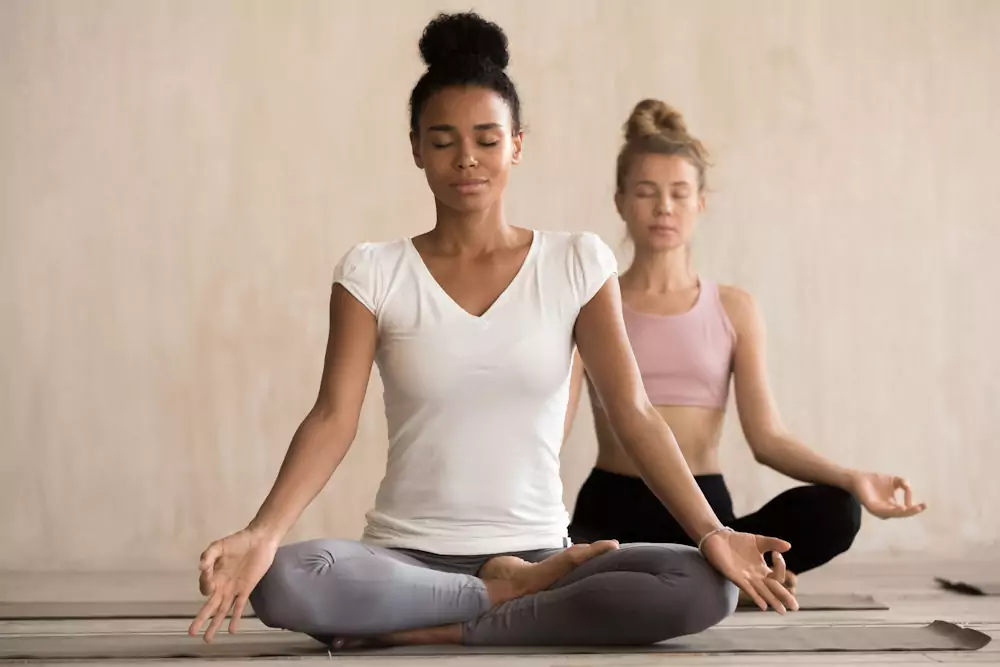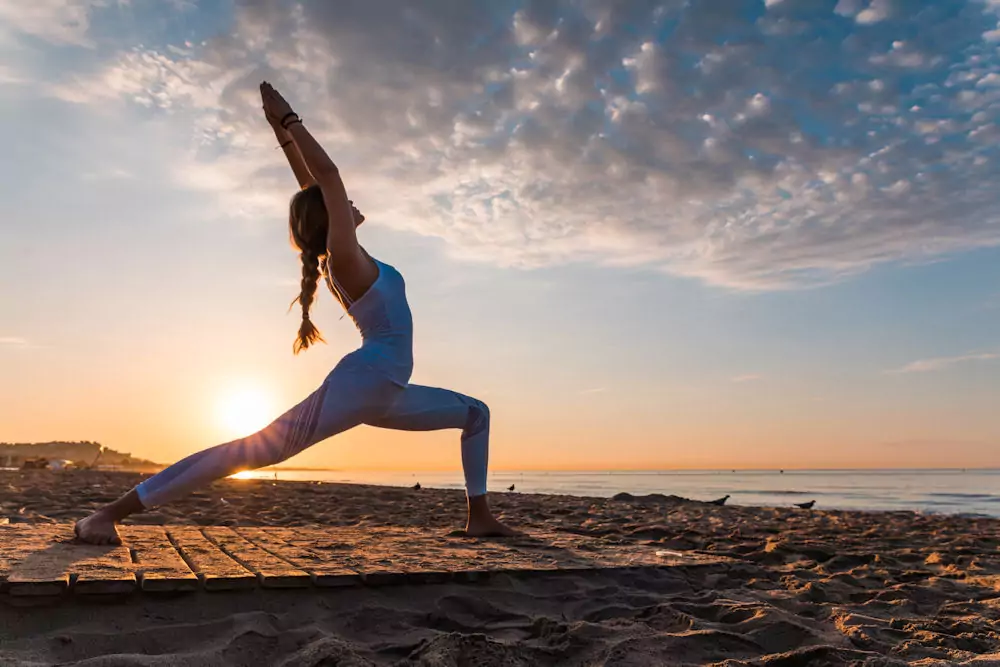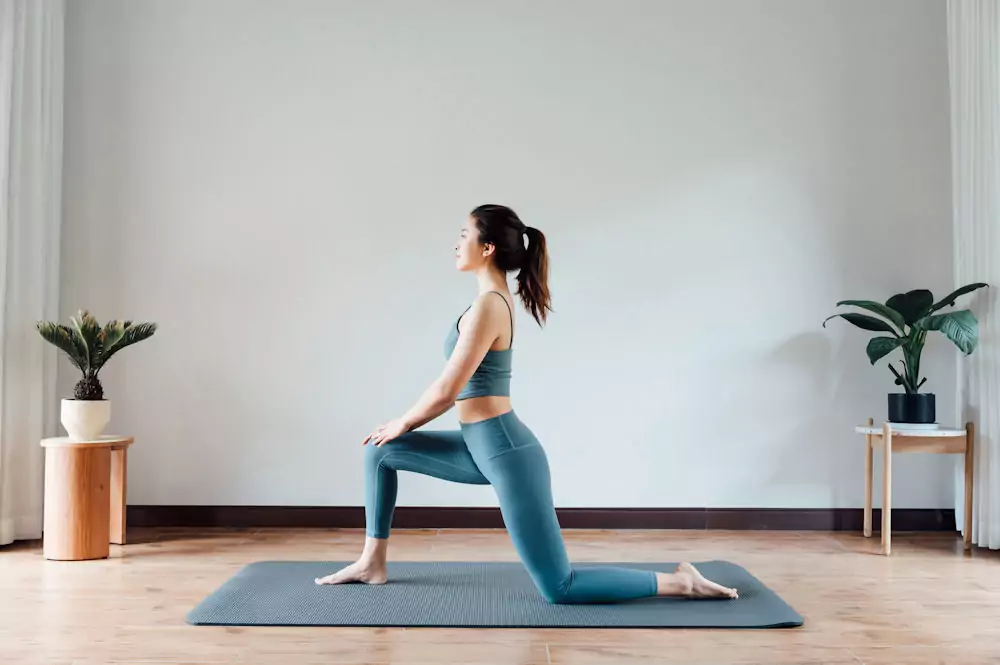
What Does Yoga Mean?
The word yoga represents the concept of union. From the ancient, beautiful mother-language Sankskrit, the word is related linguistically to our contemporary word “yoke”, which means to unite together, as when we yoke a cart to a horse.
Yoga is for uniting the ordinary level of consciousness with superconscious domains, and ultimately with the Cosmic Source Self, who dwells in all. The practices of yoga are offered to humanity as a viable way to unite with our own most precious sovereign divine nature.
Our own divinity is available to all as an incredible resource of love, creativity, intelligence, and connection, if we choose to develop a relationship with it. Through yoga, we may find our way back to our mysterious true source, and reunify with our own best and highest nature.
Reuniting with the best of what’s dormant inside human potential requires disentangling from that which is negative for us. The force of habit which binds and chains us to patterns and shady expressions of our nature which we do not wish to continue, is dissolved through practices of yoga.
Whether you think of yoga as liberating you from bonds and chains, or whether you think of it as joining you in a chosen union with your higher better nature, either way, yoga is a rigorous, loving practice that has humanity’s best interest at heart. It is accessible to all of us to be used for healing purposes and positive intentions.
What Is the 8 Fold Path Leading to Liberation?
Yoga is extensively codified and systematized, an all-encompassing path for healing body, emotions, mind, and spirit. It represents a holistic and reliable method for curing all manner of human ills.
According to the Yoga Sutras, (books of knowledge recording the best ways to practice), yoga can be conceptualized as having 8 limbs, corresponding to the 8 fold path of liberation.
If you practice yoga, you may already be aware of the word ashtanga, as there is a kind of yoga called ashtanga yoga. What Ashtanga means literally is “eight limbs”. These eight limbs are:
- Yama – moral disciplines and restrictions, rules and vows
- Niyama – positive duties and observances
- Asana – posture
- Pranayama – breathing practices and techniques
- Pratyahara – withdrawal from the world of the outer senses
- Dharana – concentration, focus
Yama - Moral Discipline, Restrictions, and Vows
When embarking on the path of yoga, we make vows of intention that we will abstain from destructive behaviors. We abstain from that which creates harm in a kind of do-unto-others spirit, as a way of not hurting others but also because we understand that when we hurt others we create karma.
The root a- in Sanskrit means non (as it often does in English). So some of the words indicate a sense of non-doing, or refraining from.
Ahimsa means non-violence, or harmlessness, in essence, to refrain from hurting others. Satya means to maintain honesty and truthfulness. Asteya translates to non-stealing or respect of other’s possessions and sovereignty. Brahmacharya refers to the right use of our personal energy, and aparigraha means generosity, or non-greed.
Yoga practiced without ethics and integrity will bring little benefit. Therefore it is encouraged to make personalized vows and commitments that we follow the golden rule in our lives, treating others with the kindness and regard with which we ourselves want to be treated.
Niyama - Positive Duties and Observances
Niyama, the second limb of the liberation and union path, refers to positive actions and practices we take:
Saucha (cleanliness), santosha (maintaining a satisfied, happy state of mind, also called contentment), tapas (discipline, or transmuting of our desires through non-indulgence in negative habits and impulses), svadhyaya (self-reflection and study of spiritual ideas and written texts), and isvararpanidaha (surrender to a positive higher power we recognize to be better than our own ego mind and its willful desires).
Niyamas build our character, turning us into the people we really mean to be in our hearts and highest wishes.
Asanas - Meditation Posture
The physical postures of yoga are called asanas, (as in bal-asana, or child’s pose). In the 8 fold path of yoga, the third limb, called Asana, refers to one important pose, the pose you take for the practice of meditation, which is a seated pose.
There are different kinds of poses for meditating, such as lotus pose or hero’s pose, but the most important feature of this pose is that it is a posture the meditator can comfortably sustain. Therefore it’s not better or worse to sit in lotus pose or hero pose, rather the importance is what works for each meditator.
A good seated pose will feel that you are able to stay seated like that without constantly being mentally pulled into sensations of pain or restlessness induced by the discomfort of the position. The position should be supportive, not a hindrance.
Pranayama - Breathing Practices
Prana refers to vital life force energy or our source of aliveness. It means the subtle essence that flows through all living forms.
Prana is so intimately connected with breath, that these are often interchanged to mean the same thing. As we know, all of the human form is affected by the flow of breath and requires unobstructed, free-moving healthy breath to thrive.
Pranayama breathing practices artfully affect the breath in a way that optimally flows throughout the human form. Thus we restore maximum vitality, or life force, throughout all portions and systems of the body.
Flow of breath intimately affects thoughts, emotions, and moods. Everything about human consciousness relies on the flow of vital life force energy, and working with the breath is a powerful way to ensure this vital life force stays fresh in us.
Pratyahara - Withdrawal From Outer Senses
Pratyahara means to withdraw or pull away from the outer sense experiences. In other words, to go within.
Rather than switching off the senses, it is more a question of tuning into the inner world and subtler inner sensations. This is why we seek out a quiet, non-stimulating environment for our meditation so that it is easier to give less our attention to what may arise in our hearing, sight, and other senses.
It is not that outer world senses are bad or wrong, just that what we seek to strengthen is our inner life, our interiority. Although oneness infuses all forms, we do not find unity by pursuing something outside of us, but rather by going into ourselves and discovering the in-dwelling source nature we already all, have and merging with that.
Once we feel our unity with the source we are, it is also easier to recognize it in everyone else, too.
So we practice pulling inward so that we are looking in the right place for our own personal path to source.
Dharana - Concentration
Yoga offers multiple ways to practice our ability to sustain our focus on one thing without wandering off in our minds. As we develop this ability we may use visualizations, focusing on the breath, or other kinds of mindfulness practices to practice the pure ability to stay concentrated without dissipating our attention.
Dhyana - Absorption Into Meditation
Dhyana is the state that can come upon us when we have been practicing our ability to go within and stay there with our attention. Dhyana is a gently pleasurable state, similar to creative absorption, a flow state similar to being “in the zone”.
Dhyana is not so much a practice that we directly “do” as much as a state we train to be able to go into. Dhyana requires some experience settling in, getting past boredom and agitation, refraining from following thoughts or focusing on outer stimuli, and learning to get absorbed into the healing, peaceful, and spacious mind in the background of our own experience.
Samadhi - Bliss
Samadhi means bliss, or enlightenment. This is the fruit we plant by practicing the other seven limbs of yoga.
Samadhi is a kind of quiet joy that arises not from escaping the difficulties of human experience, but rather from waking up from inside them and finding one is able to be in a quite natural and organic bliss state in spite of it all.
Villa Kali Ma Offers Yoga to Assist You in Connecting With Your Inner Self

At Villa Kali Ma, we seek to unite the best of the West with a strong foundation in the insights of yoga and other ancient traditions of healing.
Our founder Kay experienced her relief from the nightmares of addiction in large part through the path of yoga and holds this method of waking up from the mind spells of addiction dear to her heart.


